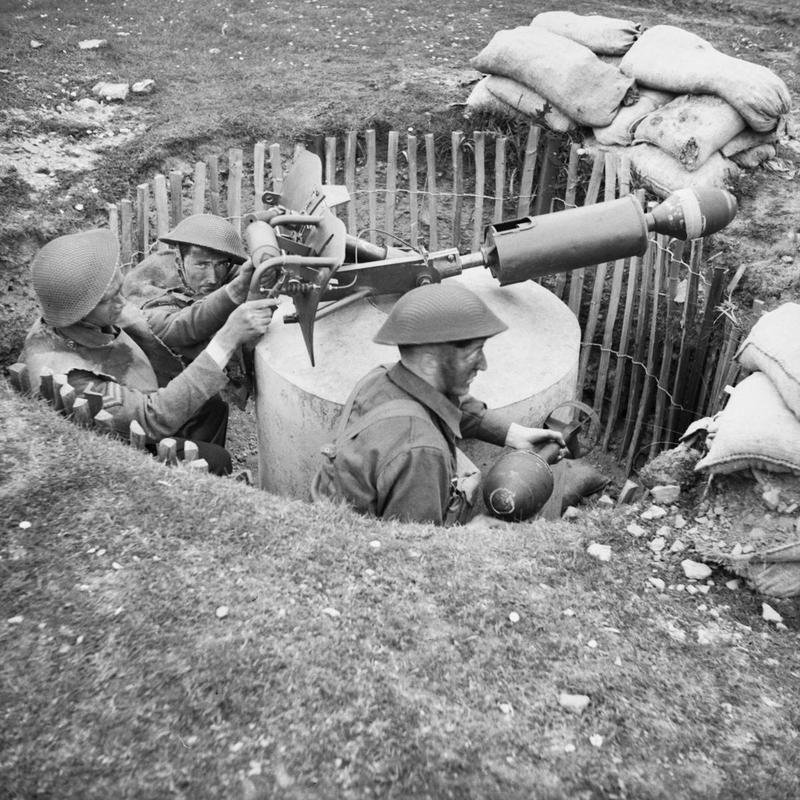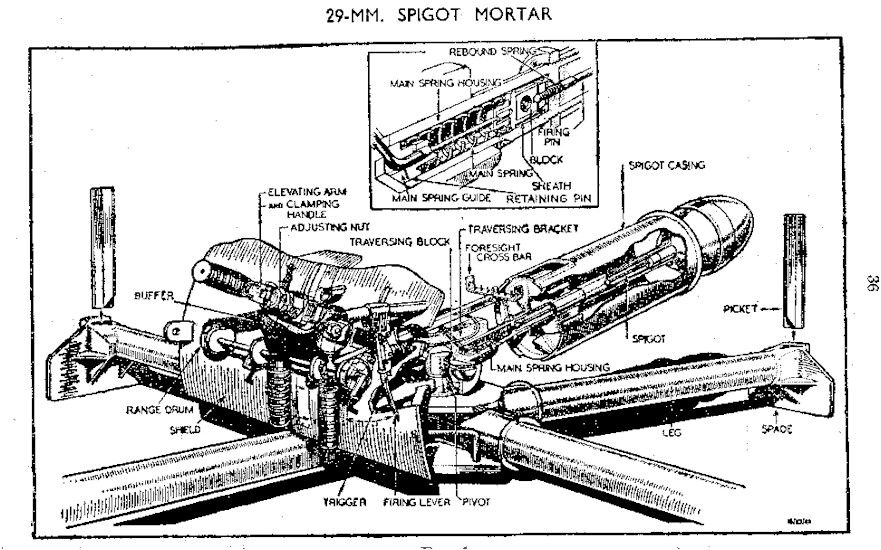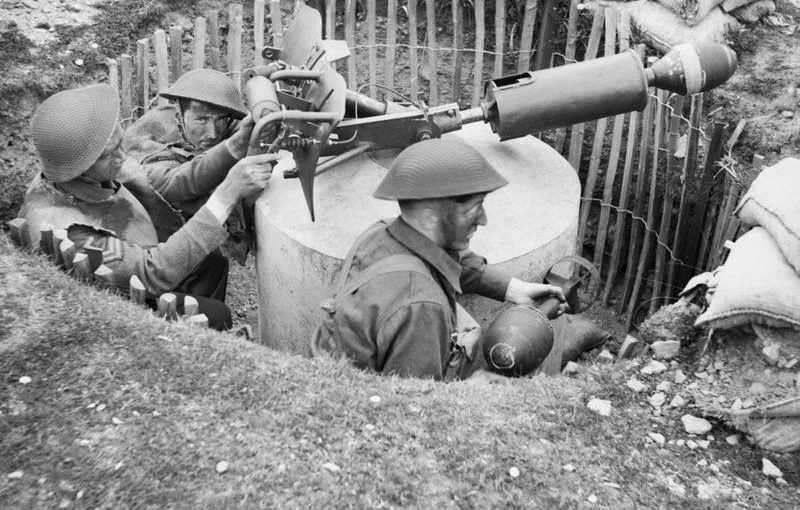The Blacker Bombard was a relatively inexpensive World War Two anti-tank weapon devised by Lt-Col Blacker in the early years of the war.
It was originally designed for use in the battlefield, but was relegated to use by the Home Guard after being replaced by the more portable PIAT (Projector, Infantry, Anti Tank).
Blacker was a private inventor who devised the idea of the Blacker Bombard based along the lines of a Spigot Discharger, a very old motor weapon design dating back centuries, which is how it got its official designation of 29 mm Spigot Mortar (Blacker Bombard).

The anti-tank weapon consists of a short, smooth metal barrel or muzzle that was long enough to keep the blast effect of the projectile ignition safely away from the operators. The round was loaded into the muzzle over the ‘spigot’ with the head of the round sticking out the top.
A sprung canister and rod inside the barrel pushed upwards and impacted against the propulsion charge that ignited at the base of the round to propel it out and away from the tube.

The primary use of the heavy bolt and rod was to dampen the recoil of the round. The recoil also acted to reset the spring, meaning that the weapon only had to be cocked for firing once, by pulling up on the tube while standing on a handle mounted at the rear.
The weapon was aimed by turning the Bombard in the direction of the enemy tank then tilting back the barrel until a pointer lined up with the appropriate range marked on the gunner’s shield.
The anti-tank round was a 20 lb (9 kg) finned bomb full of high explosive. The propellant was black powder for economy. This was sufficient to give it a range of over 100 yards albeit with a curved trajectory.
At the time of the original concept near the beginning of the war, the weapon may have been effective against German tank designs and could have caused some damage, but would have been mostly ineffective against a Panzer VI Tiger, for example.
However, there was also an anti-personnel round that weighed “only” 14 lb (about 6 kg) which could be fired out to 500 yards.
At the time, after the evacuation of Dunkirk, the British feared a massive invasion by the German army, but this never came so this particular weapon never got any practical use beyond military training and Home Guard exercises.
